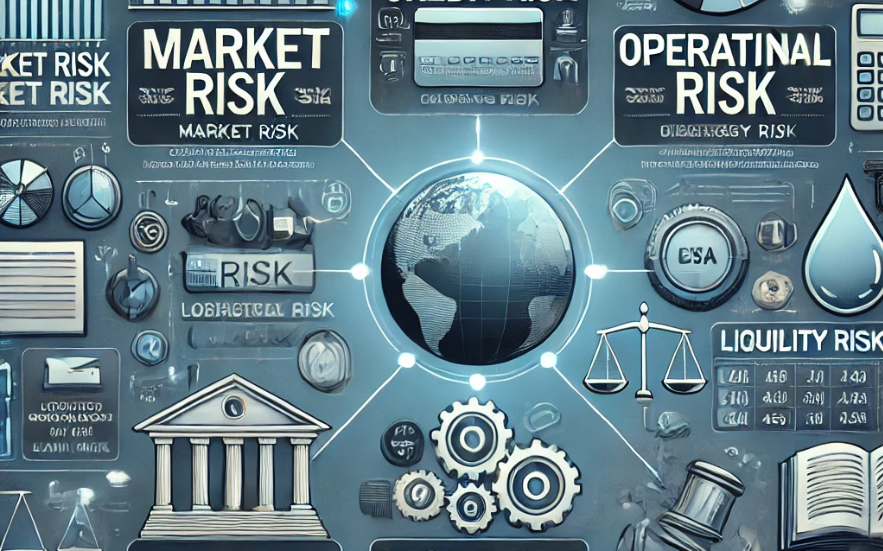In finance, the ability to peer into the future and make informed decisions is a coveted skill. Long-term financial projections are a compass for organizations, guiding strategic decisions and resource allocation. However, these projections are not crystal balls; they are complex models built on assumptions and subject to many uncertainties. This is where the critical practice of risk assessment comes into play.
Understanding the Landscape of Long-Term Financial Risks
Long-term financial projections, typically spanning five years or more, are inherently more vulnerable to unforeseen challenges than their short-term counterparts. The further into the future, we attempt to predict, the more variables come into play, each carrying its own set of risks.

Economic risks form the bedrock of financial uncertainties. Interest rate fluctuations, currency exchange volatility, and inflationary pressures can significantly impact an organization’s financial health over time. For instance, a company with substantial foreign operations may find its profits eroded by unfavorable exchange rate movements, while a real estate firm might see its investment returns diminish in a rising interest rate environment.
Operational risks, while often overlooked in long-term projections, can have profound effects on financial performance. Supply chain disruptions, as vividly demonstrated during the COVID-19 pandemic, can bring even the most robust businesses to their knees. Cybersecurity threats, increasingly sophisticated and frequent, pose a significant risk to data integrity and business continuity.
Strategic risks emerge from the ever-changing competitive landscape. Technological disruptions can render entire business models obsolete, while shifts in consumer preferences can erode market share. The rise of electric vehicles, for example, has forced traditional automakers to rapidly pivot their long-term strategies or risk becoming irrelevant.
Regulatory risks add another layer of complexity to long-term financial planning. Changes in tax laws, environmental regulations, or industry-specific rules can have far-reaching implications on profitability and operational costs.
The Art and Science of Risk Assessment
Effective risk assessment in long-term financial projections is both an art and a science, requiring a blend of quantitative analysis and qualitative judgment.

Scenario analysis remains a cornerstone of risk assessment. By developing multiple plausible future scenarios, organizations can stress-test their financial projections and identify potential vulnerabilities. For example, an energy company might model scenarios ranging from accelerated adoption of renewable energy to prolonged periods of low oil prices, assessing the financial impact of each.
Sensitivity analysis complements scenario planning by isolating the impact of specific variables. This technique helps prioritize risk mitigation efforts by identifying which factors have the most significant influence on financial outcomes. A retailer, for instance, might use sensitivity analysis to understand how changes in consumer spending patterns or supply chain costs could affect long-term profitability.
Stress testing, a more rigorous approach, subjects financial models to extreme but plausible scenarios. This technique, widely used in the banking sector following the 2008 financial crisis, helps identify systemic risks and assess an organization’s resilience to severe shocks.
The Data-Driven Revolution in Risk Assessment
The advent of big data and advanced analytics has revolutionized risk assessment practices. Organizations now have access to vast amounts of data and sophisticated tools to extract meaningful insights.

Machine learning algorithms can process enormous datasets to uncover hidden patterns and relationships, potentially identifying emerging risks before they become apparent through traditional analysis. For example, a credit card company might use machine learning to detect subtle changes in consumer behavior that could signal increased default risk.
Predictive analytics takes this a step further, using historical data and statistical models to forecast potential future risks. This approach can be particularly valuable in identifying early warning signs of financial distress or market shifts.
However, the power of data-driven risk assessment comes with a caveat: the quality of the output is only as good as the quality of the input. Ensuring data accuracy, relevance, and completeness is crucial for generating reliable risk insights.
Strategies for Mitigating Long-Term Financial Risks
Identifying risks is only half the battle; developing effective mitigation strategies is equally crucial.

Diversification remains a fundamental risk mitigation strategy. By spreading investments across different asset classes, geographic regions, or business lines, organizations can reduce their exposure to specific risks. A global manufacturing company, for example, might diversify its supplier base across multiple countries to mitigate geopolitical and supply chain risks.
Insurance and financial hedging instruments play a vital role in transferring certain risks. While these tools come at a cost, they can provide valuable protection against catastrophic losses or adverse market movements.
Contingency planning is essential for operational risks. Developing detailed response plans for various risk scenarios can help minimize disruptions and financial losses when unexpected events occur.
Building flexibility into long-term financial projections is another key strategy. Rather than relying on rigid forecasts, organizations should develop adaptive models that can be quickly adjusted as new information becomes available or circumstances change.
Emerging Trends and Future Outlook
The landscape of risk assessment is continually evolving, driven by technological advancements and emerging global challenges.

Climate risk has emerged as a critical factor in long-term financial planning. Organizations across industries are now incorporating climate-related scenarios into their risk assessments, considering factors such as physical risks to assets and transition risks associated with moving to a low-carbon economy.
Artificial intelligence and machine learning are set to play an increasingly prominent role in risk assessment. AI-powered tools can analyze vast amounts of structured and unstructured data, potentially identifying complex risk patterns that human analysts might miss.
Cybersecurity risks continue to grow in importance as businesses become more digitally dependent. Long-term financial projections must now factor in the potential costs of data breaches, system downtimes, and reputational damage associated with cyber incidents.
The integration of environmental, social, and governance (ESG) factors into risk assessment is gaining momentum. Investors and stakeholders are increasingly demanding that organizations consider these non-financial risks in their long-term planning.
Conclusion: Embracing Uncertainty with Confidence
In an increasingly complex and interconnected world, the ability to assess and manage long-term financial risks is more critical than ever. While perfect foresight remains elusive, robust risk assessment practices can provide organizations with the insights needed to navigate uncertainty with confidence.
By combining traditional risk assessment methodologies with cutting-edge data analytics, organizations can develop more resilient financial projections. The key lies in adopting a proactive and flexible approach, and continuously refining risk models as new information becomes available.
As we look to the future, one thing is certain: the practice of risk assessment will continue to evolve. Organizations that embrace this evolution, investing in advanced tools and expertise, will be better positioned to thrive in an uncertain world. Pitch Deck Design Experts can play a crucial role in effectively communicating complex risk assessments to stakeholders, translating data-driven insights into compelling visual narratives that drive informed decision-making.
In the end, effective risk assessment in long-term financial projections is not about predicting the future with certainty. It’s about being prepared for a range of possibilities, armed with the insights and strategies needed to adapt and succeed in an ever-changing landscape.




